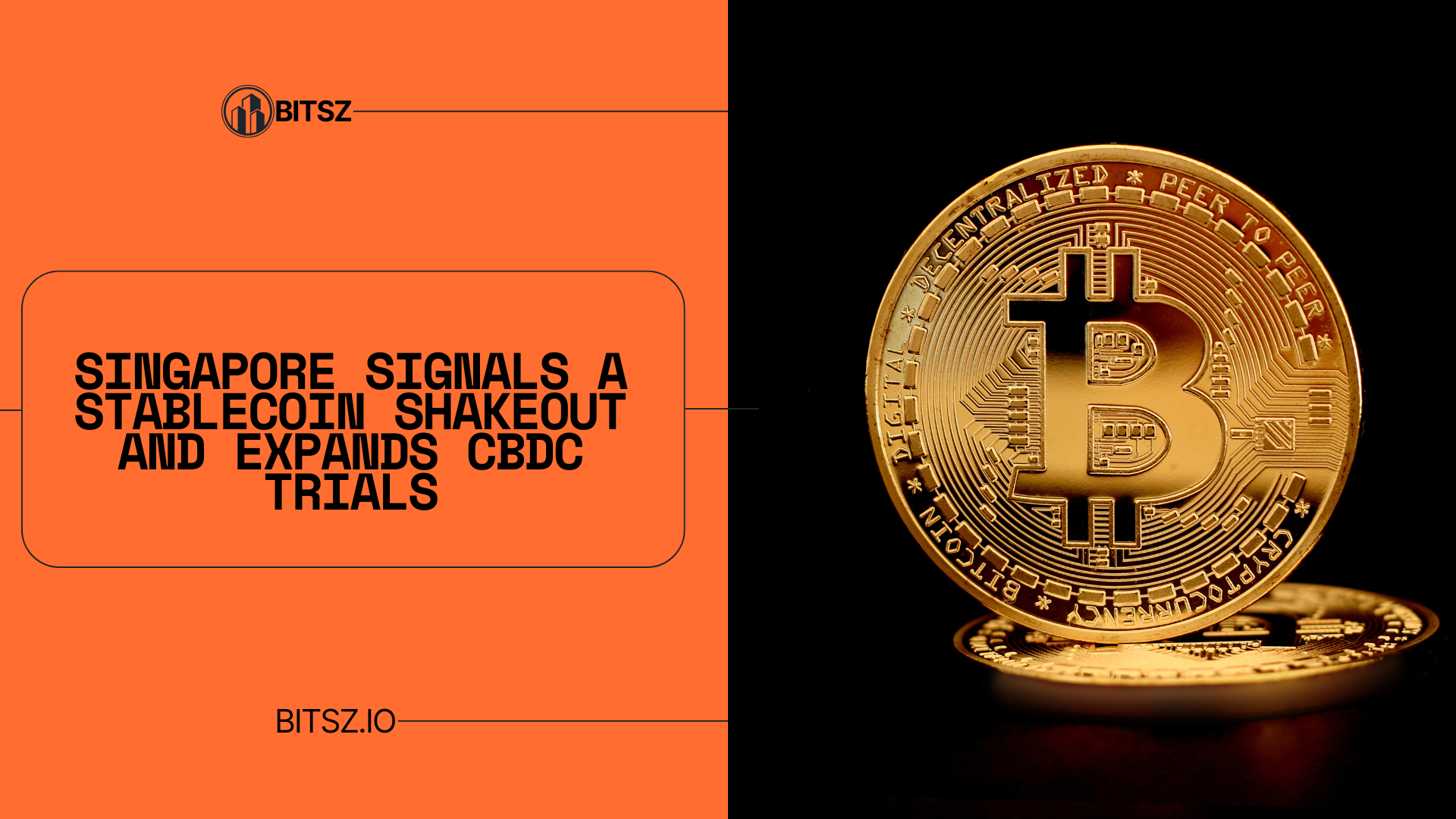
Singapore just made its clearest case yet that the era of unregulated stablecoins is ending. Speaking at the Singapore FinTech Festival, Monetary Authority of Singapore (MAS) managing director Chia Der Jiun said coins with a “patchy record of keeping their peg” won’t cut it as safe settlement assets, foreshadowing a shakeout as the city-state puts long-planned rules into law.
MAS is now moving from design to delivery. Chia said the central bank will table draft legislation for its stablecoin regime, finalized back in 2023, with an emphasis on sound reserve backing and reliable redemption. Only fully regulated, reserve-backed stablecoins will be recognized for large-value transactions, he added. In parallel, MAS is widening CBDC and tokenization pilots — including live wholesale CBDC tests and upcoming trials using tokenized MAS bills — as part of a broader push to modernize settlement rails.
The new line in the sand for stablecoins
Cointelegraph’s report from the event captured the tone: expect a shakeout as Singapore draws a bright line between regulated single-currency stablecoins and everything else. Unregulated tokens, Chia argued, resemble 2008-style money-market fragility and are “not suitable” for wholesale settlement. The message is less anti-crypto than pro-standards: if you want to be used in real finance, meet real-finance rules.
This follows MAS’s Stablecoin Regulatory Framework (Aug. 15, 2023), which set out strict requirements for single-currency stablecoins (SCS) pegged to SGD or a G10 currency and issued in Singapore. The framework covers reserve composition and custody, capital and liquidity, clear disclosures, and redemption at par within five business days for direct redeemers — a guardrail designed to keep pegs credible under stress.
Reuters’ recap of Chia’s speech adds timing: MAS is preparing to bring the laws into force, with stablecoin legislation expected in 2026, while work continues on tokenized instruments and interoperability with other central banks. For issuers and platforms, that means a compliance runway — and a hard landing for products that don’t meet the bar.
Why this matters now
Stablecoins dominate crypto payments and cross-border flows in Asia, but confidence has been dented by repeated de-peggings and opaque reserves. MAS’s stance mirrors global central-bank guidance: if private tokens want to function like money, they need money-grade safeguards — namely high-quality, short-dated reserves and same-value redemption on demand. Singapore’s framework converts that principle into operating rules, making life easier for institutions that need clarity before they build.
Crucially, MAS isn’t picking winners. It’s defining a label (MAS-regulated SCS) and a rulebook. Issuers who qualify get credibility and access; those who don’t will likely be cordoned off to speculative venues, not wholesale settlements or tokenized capital-markets pilots.
CBDC and tokenized bills: the other half of the story
Singapore isn’t betting on stablecoins alone. The central bank confirmed that DBS, OCBC and UOB completed the first live trial of Singapore-dollar wholesale CBDC for overnight interbank lending, and said pilots will now extend to tokenized MAS bills settled in CBDC. That combination — tokenized government paper plus CBDC settlement — is about building safe collateral and money rails for a tokenized market.
It dovetails with MAS’s BLOOM initiative, which tests how regulated stablecoins, tokenized bank liabilities, and wholesale CBDC can coexist in a single ecosystem. The goal: instant, programmable settlement with clear legal claims, whether the asset is a bank deposit, a state-issued digital liability, or a fully regulated private token.
What changes for issuers, exchanges and institutions
- Stablecoin issuers targeting Singapore will need to ring-fence reserves, use high-quality cash/T-bills, submit to audits, keep minimum base capital, and guarantee par redemption within the rulebook’s timelines. That’s expensive — but it’s also the ticket to wholesale use and institutional adoption.
- Exchanges and PSPs should expect labeling rules (only call it “MAS-regulated” if it is) and disclosure obligations. The upside: cleaner fiat ramps and clearer asset quality for users.
- Banks and asset managers gain regulatory certainty to participate in tokenized bills, repo, and on-chain settlement without compromising risk standards — especially as wholesale CBDC becomes a common settlement asset in pilots.
The competitive angle: standards are the moat
By sequencing rules + pilots, Singapore is trying to anchor tokenization in supervised money and high-quality assets — not speculative coins. That approach echoes MAS’s 2023 framework and sets a template other hubs are now studying. For stablecoin brands, the signal is stark: meet the label or risk marginalization as corporate treasurers and public-sector use cases come online.
Conclusion
Singapore is tightening the screws in a way that’s friendly to builders but unforgiving of weak designs. Reserve-backed, redeemable, supervised stablecoins get a path into mainstream finance; unregulated coins face a shakeout from serious payment and settlement use. And with wholesale CBDC and tokenized bills moving to live pilots, the city-state is stitching together the pieces of a tokenized financial system — one where the money leg is as robust as the tech.